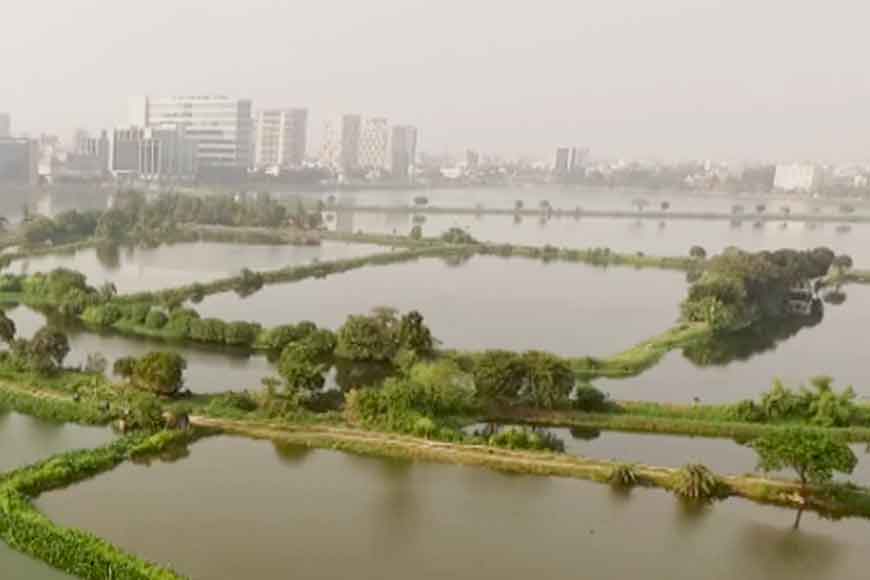On World Wetlands Day, let us look at the wetlands of Kolkata

Another World Wetlands Day is at our doorstep. But most of us are completely unaware of the importance of a wetland. Some consider it to be swampy worthless garbage dump while some consider it to be a disgusting abode of mosquitoes. Thanks to our ignorance!
World Wetlands Day occurs on February 2 every year to mark the date of adoption of Convention of Wetlands on the same day in 1971. But what are wetlands? According to the International Union for the Conservation of Nature and Natural Resources (IUCN), the Ramsar Convention technically defines a wetland as the “areas of marsh, fen, peatland or water, whether natural or artificial, permanent or temporary, with water that is static or flowing, fresh, brackish or salt, including areas of marine water the depth of which at low tide does not exceed six meters”.
The Ramsar Convention on Wetlands of International Importance is a treaty which aims to conserve and sustainable use of wetlands. There are 2242 Ramsar sites which have been identified for protection. East Kolkata Wetlands is the largest resource ecosystem which helps in treating 600 million litres of wastewater and sewage on a regular basis. Natural and man-made canals and creeks which were made during the colonial era used to bring sewage which would flow through this wetland. East Kolkata Wetlands cover 125 square kilometers and consist of salt meadows, settling ponds and sewage farms. These act as a natural flood control system for the city. Located away from river Hooghly, the drainage and sewage system of the city has a design which gets benefitted from the East Kolkata Wetlands. These wetlands serve as a gigantic spill basin which becomes highly advantageous during the monsoons when the flooding is common through the Gangetic delta for the low-lying city of Kolkata.
We cannot afford to undermine the significance of East Kolkata Wetlands as they are indispensable when it comes to human survival. These are the most productive environments of the world that provide various ecosystem services ranging from supply of fresh water, food that attract animals, stores flood water, maintains water flow and mitigation of climatic change, offers habitat to fish, maintains diversity, haven for flora and fauna. The benefits are simply countless but how much do we acknowledge and decipher the significance?
The lust for land has created a huge impact on East Kolkata Wetlands. The relentless pressure of the real estate industry for land has choked the unique wetlands known for its sustainable symbiosis. Illegal landfills and construction have given rise to usurpation of the wetlands over the years. Since the colonial times, the area of wetland has shrunk unimaginably. Even after being recognized as a Ramsar site in 2002, the encroachment of the fertile wetlands has only increased with each passing day. No wonder, flooding in certain areas of Kolkata have become a common phenomenon during monsoons. The unique and precious wetlands of Kolkata might soon turn into a long-forgotten history if more buildings are constructed in this region in days to come. Environment activist Arunkanti Biswas says: “We had previously conducted various rallies in Bantala and other interiors to protest the illegal use of East Kolkata Wetlands which is an important part of the heritage of the city and has been acknowledged all over the world. We had also put up flexes at various crossings to create awareness. We had also spoken to the people residing there in order to save the land from the hands of land sharks and tell them about the importance of the Kolkata Wetlands, the way it serves as a sedimentation basin, supports fishing community and leads to agricultural development. Awareness is the only key here.”
Tushar Chakraborty, another environment activist believes: “East Kolkata Wetlands demands more writings in different newspapers. Media needs publicize this more. The media has not said enough. Those who live around East Kolkata Wetlands, need to be united to protect the wetlands irrespective of their status. The political parties must consider protecting these precious wetlands in their respective agendas.” Whatever be the agenda, the wetlands of Kolkata need to be saved and protected in the interest of the city’s survival and that of its citizens.









